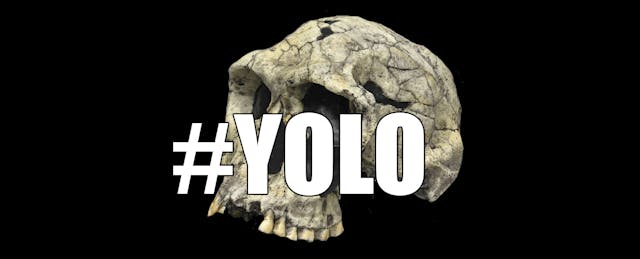The greatest inventions, solutions, and technologies are always supported by a group of people working together. It’s collective energy, ideas, and resources that make change-the-world things happen. It’s collaboration. It makes sense. It works.
So, why is learning still such a solo playground? We’re graded on our individual results, and overwhelmingly choose to study alone--sometimes in literal “study cages,” as I experienced at the University of Wisconsin. But then we join the youth soccer club, get our first job serving burgers, or graduate from college, and we’re suddenly expected to collaborate, work with others. The disconnect is baffling, but still prevalent in our education system.
Science Proves that We Are Smarter Than Me
One of the first people to propose the theory of "collaborative learning" was Uri Treisman, a graduate student at UC Berkeley in the 1970s. He was curious as to why minority students at the college--despite comparable achievements and merit to their peers--had significantly higher failure rates.
Treisman studied what made at risk students successful versus unsuccessful. What he found was not a lack of motivation, or family support, or preparation, but a lack of collaboration. To see if his hypothesis was correct, Treisman created a workshop program for these students that encouraged teamwork on challenging problems.
The results were dramatic. Students in these workshops consistently achieved GPAs more than double the class average. The program at Berkeley was so successful that it was replicated at multiple other universities and colleges throughout the country.
By working together in a positive environment, students in Treisman’s workshops gained confidence and improved their scores. The students who were considered most at risk outperformed their peers, going on to contribute their skills as physicians, engineers, and scientists. One previously underperforming student in that first workshop went on to become a Rhodes scholar.
Treisman’s study demonstrates how powerful it is for kids to learn together with others who think the way they do. If you take students--even those most at risk -- and put them in an unintimidating situation where they can learn from each other, performance improves substantially.
Technology Removes Barriers to Collaboration
If we know that getting students to collaborate is so effective, why doesn’t it happen more often? If you pair like-minded students together, everyone benefits. But teachers seldom have the time to do that. And students typically don’t take the initiative to engage classmates because of logistical and social factors.
The simple fact is that socializing is intimidating. Before they can even think about asking the top student in class for help, kids can be paralyzed by questions. Will they like me? Is my hair okay? Will I seem dumb? These social inhibitions start in middle school and last through college. Even if they overcome them, there are simpler logistical barriers in the way.
Technology, the internet, and mobile devices today are helping students overcome those barriers to collaborative learning by allowing them to interact without judgement. Students can now access the collective brainpower of their classmates, and of classmates around the world, without worrying about seeming “smart.”
Help Students Help Each Other
Last fall, my 11-year-old daughter was studying for a social studies test by making notecards on StudyBlue, my company’s app that allows students to crowdsource millions of notecards made by peers in similar classes around the world. She was making cards for “Homo habilis” and up came an explanation that only a middle school student could create: “Homo habilis was YOLO 2.3 million years ago.”
Translation: Homo habilis only lived once more than 2 million years ago. My daughter saw that card and she never had to study it again. I’d challenge you to find any teacher or textbook that uses this definition of Homo habilis.
That’s the beauty and power of education technology. The breadth of materials and the variety of students using online learning resources ensures that no matter what a student is studying, there’s an explanation from someone out there that will make sense to him or her. Whether you’re trying to learn about biology or archeology, calculus or chemistry, you can find a community of like-minded learners online.
It used to be that that knowledge was trapped in the hallowed halls of Ivy League universities or behind the covers of expensive textbooks. For the first time, students anywhere around the world can come together in the same place, be on equal footing, learn at their own pace and in the way that works best for them. You can come and sit alongside that ‘A’ student without any social pressure. Access to open content online can level the playing field between the natural learners and those who are struggling. And that’s some good news for our beleaguered educational system.
Becky Splitt spoke on the topic of this article at TEDx Madison on Saturday, June 7.


